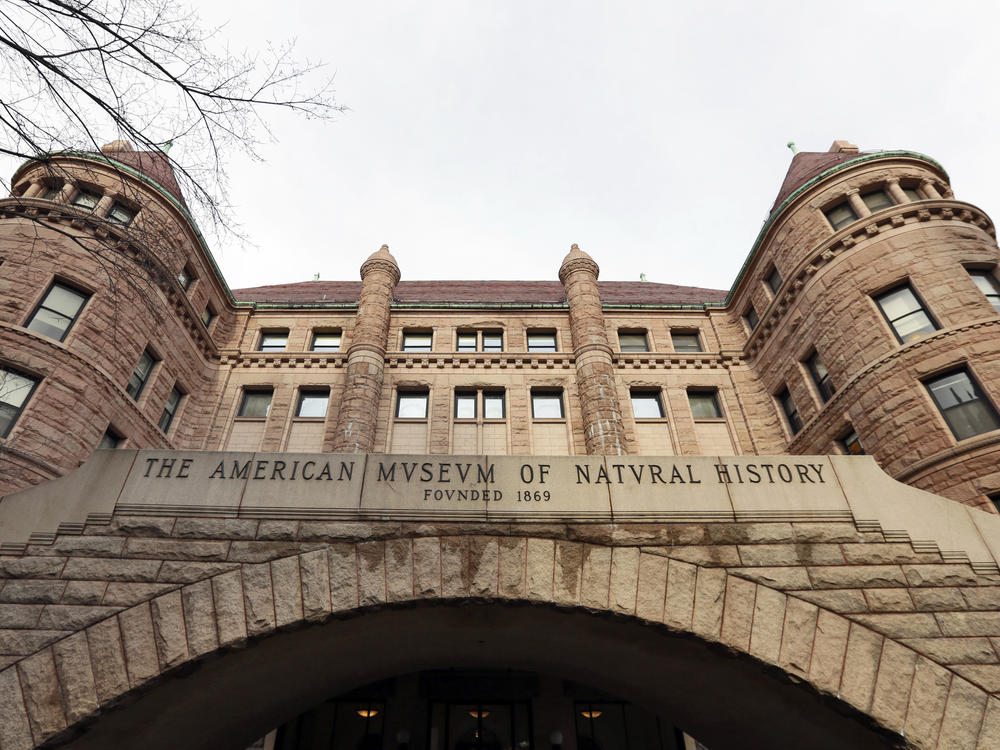Section Branding
Header Content
Natural History Museum vows better stewardship of human bones
Primary Content
Updated October 17, 2023 at 5:33 PM ET
The American Museum of Natural History says it plans to improve its handling of thousands of human remains. A recent investigation found that the New York institution has not been proactive in sharing information about its collection, which includes the bones of Native Americans and enslaved Black people.
The museum says it will remove all bones and objects made from bone over the next eight weeks, and then put them into storage while the museums holds conversations with affected communities. The museum is also changing its collections policy, which it has posted on its website.
Sean Decatur, who is the museum's first African American president, told NPR that when he joined the museum in the spring, one of his highest priorities was inclusivity for all.
"We can't become an inclusive and just institution until we are very clear about coming to terms with our past," he said.
For decades, museums used human remains for scientific research. Erin Thompson, professor of art crime at John Jay College of the City University of New York, said that this research is rooted in racism.
"They were looking for physical proof of the superiority of white people and they didn't find it, but that meant they just kept looking," she said.
Museums have been historically unethical in how and why they collected human remains. Researchers dug up sacred burial sites, for example, and accepted skeletons from private collections without requesting permission from family members.
Thompson spent months investigating the American Museum of Natural History after receiving an anonymous tip from a staff member. She said what surprised her the most was the museum's lack of publicly-available information.
"They won't tell you any information about just who these individuals are," said Thompson, who wrote about her findings for Hyperallergic. "Where did they come from? How did they get these remains?"
In a recent statement to museum staff shared with NPR, Decatur, president of the museum, acknowledged the troubled history of the bones and items made from human bone, some of which were displayed for the public and others which were kept in storage for research purposes. "Human remains collections were made possible by extreme imbalances of power," he wrote. He referred to some research as "deeply flawed scientific agendas rooted in white supremacy."
Decatur said that the museum is making "concrete changes" using "a new ethical framework." The museum will remove all public displays of human remains and "make sure that we have the staffing and support in place to have a full accounting for our holdings, as well as supporting [their] return and repatriation," he said.
Other museums, including the Smithsonian Institution and The Penn Museum, have also vowed to be more transparent.
"This is long term work for us," Decatur told NPR. "The history here is long and deep and painful and is going to take some very careful, intentional work over time to appropriately repair and heal. And that's the work that's ahead of us."
This story was edited by Jennifer Vanasco and produced for web by Beth Novey.
Copyright 2023 NPR. To see more, visit https://www.npr.org.

